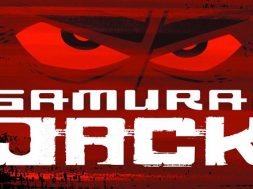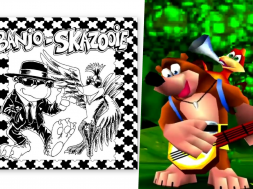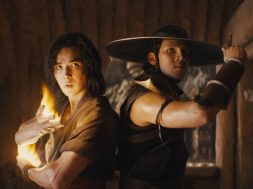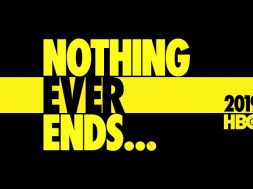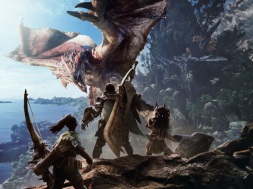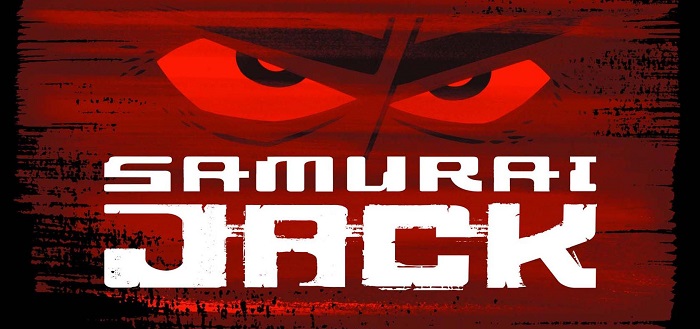
Saturday Morning Cartoons – Samurai Jack
“Gotta get back. Back to the past. Samurai Jack.”
Aaaannnnnnndddddddd now it’s stuck in your head for the day. You’re welcome.
 The basic premise of Samurai Jack is a story that will sound familiar to many fans of historical fantasy. Long ago, in a distant land, Aku, the shape-shifting master of darkness unleashed an unspeakable evil. A lone samurai warrior wielding a magic sword stepped forth to oppose him. Before the samurai could strike the final blow, Aku tore open a portal in time and cast the samurai into the future where Aku’s word is law. Now, the samurai seeks to undo Aku’s reign in the future. However, in order to do so, he has got to get back. Back to the past…Samurai Jack.
The basic premise of Samurai Jack is a story that will sound familiar to many fans of historical fantasy. Long ago, in a distant land, Aku, the shape-shifting master of darkness unleashed an unspeakable evil. A lone samurai warrior wielding a magic sword stepped forth to oppose him. Before the samurai could strike the final blow, Aku tore open a portal in time and cast the samurai into the future where Aku’s word is law. Now, the samurai seeks to undo Aku’s reign in the future. However, in order to do so, he has got to get back. Back to the past…Samurai Jack.
Although the overarching goal of returning to the past is ever-present, it usually takes a backseat, storywise. Instead of hard, ongoing continuity, the series is almost wholly episodic, barring the three intro episodes. For the most part, each episode after that deals with a single short adventure in Jack’s quest. There are some recurring characters, such as The Scotsman, but generally, the series can be jumped into at any point. The intro music provides all the background anyone will need to understand what’s going on.
But Jack’s just like, “Word! Let me get some!”
Genndy Tartakovsky, who had previously  created Dexter’s Laboratory, is also the mind behind Samurai Jack. I didn’t learn that he’d worked on the former until very recently, maybe within the last two years. Nor did I realize that Will.i.am was the one providing the hypnotic chant for the opening vocals. Even re-watching it now, there are so many new things I’m noticing that I never paid attention to as a kid.
created Dexter’s Laboratory, is also the mind behind Samurai Jack. I didn’t learn that he’d worked on the former until very recently, maybe within the last two years. Nor did I realize that Will.i.am was the one providing the hypnotic chant for the opening vocals. Even re-watching it now, there are so many new things I’m noticing that I never paid attention to as a kid.
For me it seems so strange that the same person could be behind both Dexter’s Laboratory and Samurai Jack. Sure, there is plenty of similarity between the animation, but apart from that they feel like polar opposites. Dexter’s Laboratory was loud, bombastic and had the varied colour palette that you’d normally associate with Saturday Morning Cartoons. Samurai Jack is the antithesis of this. Samurai Jack is an adventure in minimalism and decompression.
Back to Basics
The plot for any one Samurai Jack episode could often be summed up in a few words. ‘Jack meets a rowdy Scotsman wanted by Aku’. ‘What if Jack was in Frank Miller’s 300?’. ‘Jack learns to jump good’. As such, each episode asked nothing in terms of comprehension, instead asking for patience and attention.
Now, don’t be mistaken, just because I say Samurai Jack‘s storylines could be easily summarized, doesn’t mean they were any less epic. Minimalism and Simplicity aren’t the same thing here. Think of those writing exercises like ‘The Saddest Story You Can Write With Six Words’. Samurai Jack is like that. It could be action packed, hilarious or heart breaking, all using the smallest of creative tools. Goku could spend five minutes screaming over a scrolling background in Dragonball Z and we’d call it filler. Jack can spend 30 seconds carefully drawing his sword and it can feel entirely different. It all helped accentuate the action when the screen finally filled with slashes as he cut Aku’s robot army to ribbons.
Audio Jack
Samurai Jack is the first kid’s show I watched that really gave me an appreciation for audio in a primarily visual medium. It was oddly backwards compared to other shows I was watching at the time. The visuals were the primary story telling method, while the audio conveyed all of the action. The dialogue is sparse, moments of exposition few and far between, it’s rarely needed for Jack’s stories. Instead, the story is told by showing Jack trekking for days across hills, or making us watch as some wordless event sets the context for an episode. Even when there is ongoing dialogue, the voice acting plays in wonderfully. Phil LaMarr‘s dulcet tones for Jack contrasted perfectly with the gravelly, Kabuki Japanese Patriarch that Mako provided for Aku.
(Mako was also the voice for Uncle Iroh in Avatar The Last Airbender. Strange to think of such a nice man basically playing Japanese Satan.)
Gotta Get Back
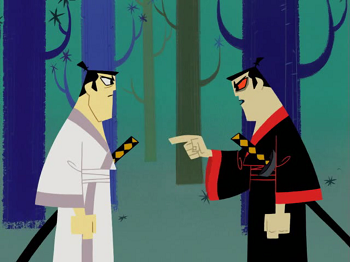 In the first season alone there are two beautiful examples of this in the episodes ‘Jack and the Three Blind Archers’ and ‘Jack Versus Mad Jack’. The former features an extremely long opening crawl of a Viking army getting pinned down by an endless rain of black arrows. The only words spoken are a few minutes in, when it’s revealed that the Viking Chief is recounting the story as we see it. When Jack finally meets the Archers, each of his movements is slow and methodical and accompanied by a singular soundbite.
In the first season alone there are two beautiful examples of this in the episodes ‘Jack and the Three Blind Archers’ and ‘Jack Versus Mad Jack’. The former features an extremely long opening crawl of a Viking army getting pinned down by an endless rain of black arrows. The only words spoken are a few minutes in, when it’s revealed that the Viking Chief is recounting the story as we see it. When Jack finally meets the Archers, each of his movements is slow and methodical and accompanied by a singular soundbite.
In the latter episode, Jack’s visual demeanor slowly degrades and becomes more like his corrupted counterpart, Mad Jack, as his resolve breaks down. As the episode goes on, the contrast of use between the colours black and white gives an idea of how the battle is going. If nothing else, I firmly recommend you watch those two episodes from the series. This goes double for anyone with an interest in animation as an artform.
Back to the Past
When I was a kid, most of the shows I watched were very dark in tone. A Batman The Animated Series, Gargoyles, or even Transformers: Beast Wars were dealing with heavy themes compared to other cartoons aimed at my age group. A Samurai Jack was equally dark, but back then it seemed much more mature. Not “mature” because it was so much more violent, with Jack’s enemies being changed from humans to robots so that it could get past censors before airing. No, I mean mature as in grown up, more artistic in nature. It was one of the key shows that bridged the gap between age groups. The show that eventually led me into Seinen anime such as Cowboy Bebop or Ghost in the Shell.
were very dark in tone. A Batman The Animated Series, Gargoyles, or even Transformers: Beast Wars were dealing with heavy themes compared to other cartoons aimed at my age group. A Samurai Jack was equally dark, but back then it seemed much more mature. Not “mature” because it was so much more violent, with Jack’s enemies being changed from humans to robots so that it could get past censors before airing. No, I mean mature as in grown up, more artistic in nature. It was one of the key shows that bridged the gap between age groups. The show that eventually led me into Seinen anime such as Cowboy Bebop or Ghost in the Shell.
If you’ve never seen it, but have heard some rumblings about the new revival, I wholeheartedly recommend that you go back. Back to the past, and watch
